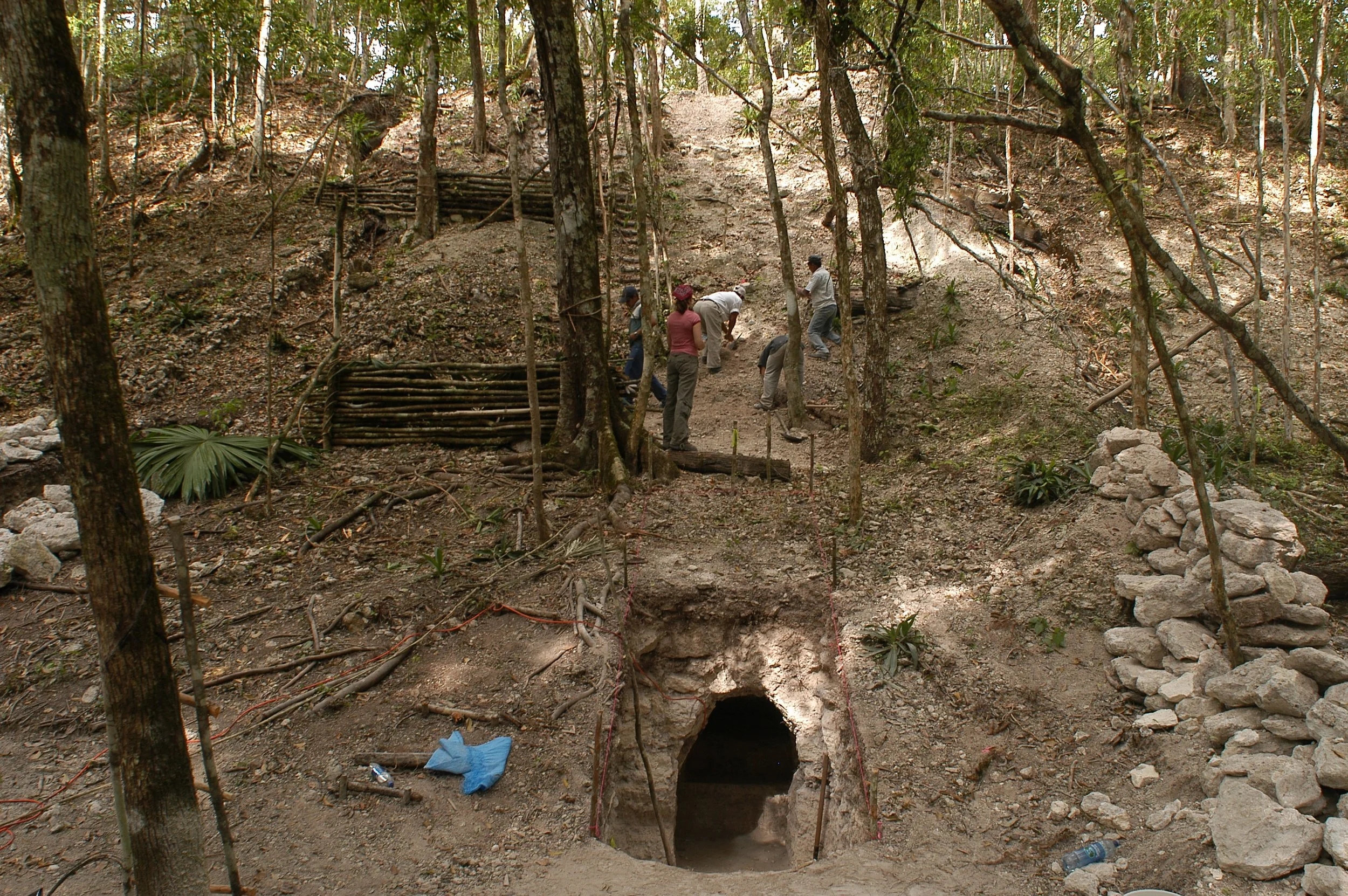
Explore, research, conserve.
What is PRASBX
The San Bartolo-Xultun Regional Archaeological Project (PRASBX) is a multi-institutional collaboration engaged in archaeology, art conservation, and environmental science initiatives in Guatemala. PRASBX investigates two nearby sites in the northeastern Petén region that had a long history spanning the rise and fall of Classic Maya kingdoms (ca. 400 BCE – CE 900). San Bartolo has the earliest evidence of Maya writing yet discovered dating to the 4th century BCE and Xultun was an important city led by a powerful dynasty during the 5th-9th centuries CE. Today, the large urban center and its network of smaller sites have been reclaimed by tropical forest, a protected ecological zone designated the Maya Biosphere Reserve.
The 100x100 campaign.
Our goal is 100 donors pledging 100 dollars (or what they can!) to support research, conservation, and site protection. Donate to make a difference!
Donation Update (dec 2, 2025) . . . . 53 donors!
The next 25 donations will be matched!
An outstanding legacy
Video “The San Bartolo Murals,” copyright 2024, Proyecto Regional Arqueológico San Bartolo-Xultun. All rights reserved.
This 12-minute film presents the significance of the extraordinary murals at San Bartolo and summarizes recent discoveries behind our current research. As our resident documentarian, Riley Mallory has spent three full field seasons at San Bartolo-Xultun recording material that tells the story of our project. This film was created in collaboration with project directors Heather Hurst & Boris Beltrán as the introduction to a series of documentaries that will address various aspects of our work in the Maya Biosphere Reserve. Creating media on topics from doing archaeology and conservation, to a detailed interpretation of the painted masterpiece, we are excited to share our work with the public, inspire curiosity, and raise awareness for protecting the site of San Bartolo.

-
Although Xultun was known to archaeologists 100 years ago, very little research had been done at the site. In 2001, the discovery of murals at the previously undocumented site of San Bartolo initiated the first focused scientific investigations into the dynamic history of the region. We now know a great deal regarding regional occupation, periods of strength and prosperity, as well as stress. Xultun and nearby San Bartolo continue to reveal secrets and yield new discoveries about lifeways in Petén.
-
Since the project’s inception, the SBX team has been a multi-disciplinary collaboration bringing together experts and students from Guatemala and the U.S. in the fields of archaeology, materials science and conservation, geography, art and art history, epigraphy, and environmental sciences. Over the duration of the project, we have built a close relationship with the experienced excavators, masons, and field personnel from the villages of Uaxactún, Dolores, and other communities in Petén, Guatemala – meet our team!
-
We have an active program of research that spans archaeological initiatives, documentary projects, ethnographic collaborations, and ecologically driven investigations. In addition, each year we continue conservation monitoring of the murals and training future stewards to maintain their preservation. PRASBX shares its discoveries and insights through publications, lectures, and videos/media – explore these resources!
Want project swag? …and to help us make new discoveries?
We have so many questions we would like to research, new sites we want to explore, and artifacts we need to conserve - please consider adding your support to our project. Our goals include researching newly discovered features identified using lidar, going solar in camp, creating more films and educational materials, additional tools for monitoring wildlife, and increasing student opportunities in lab analysis. SBX Project has amazing swag - check out our donation page through this link!

